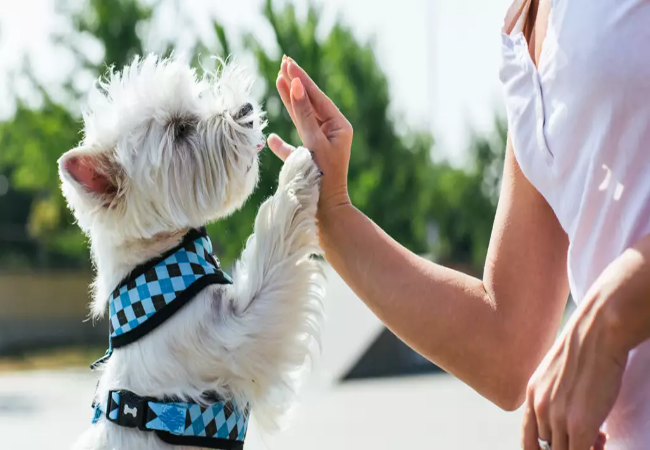Dog Paw Pads 2025: Vet-Approved Function, Care & Protection 🐾✨

In this article
Dog Paw Pads 2025: Vet-Approved Function, Care & Protection 🐾✨
By Dr. Duncan Houston BVSc
Dog paw pads are remarkable structures that play a critical role in a dog’s mobility, comfort, and overall well-being. Similar to cats, a dog’s paw pads serve multiple purposes, from cushioning joints to providing sensory feedback. In this guide, we’ll explore why paw pads are important, how they work, and tips to keep them healthy.
1. Shock Absorption 🏃♂️
One of the primary functions of paw pads is absorbing impact. Every time a dog walks, runs, jumps, or lands from a height, their joints, bones, and muscles endure stress. Paw pads act as natural shock absorbers, helping to:
-
Reduce pressure on knees, hips, and ankles.
-
Prevent injuries during high-impact activities like running or playing fetch.
-
Support puppies and older dogs, whose joints may be more vulnerable.
Without healthy paw pads, even ordinary movement could cause discomfort or long-term joint problems.
2. Protection from Harsh Surfaces 🛡️
Paw pads protect dogs from a variety of surfaces and environmental hazards:
-
Hot pavement or sand: Pads are thicker and more resistant to heat than the rest of a dog’s skin.
-
Cold or icy surfaces: Insulation prevents frostbite on winter walks.
-
Rough terrain: Pavement, gravel, rocks, or debris are cushioned by the pads.
Despite this protection, extreme heat, ice, or sharp objects can still cause burns, cuts, or abrasions, so paw pad care is essential.
3. Traction and Stability 🏔️
The textured surface of paw pads helps dogs maintain grip and balance. This allows them to:
-
Run on slippery surfaces without falling.
-
Navigate uneven terrain safely.
-
Perform athletic movements like climbing, jumping, and turning sharply.
Dogs with worn or injured pads may struggle with traction, which can lead to slips or falls, particularly on smooth indoor floors.
4. Heat Insulation and Thermoregulation 🌡️
Dog paw pads provide a degree of temperature regulation:
-
The thick, tough pads help insulate against heat and cold.
-
While most dogs cool themselves by panting, sweat glands in the paw pads also aid in thermoregulation.
This is why you may notice dogs leaving small wet prints on hot days—they are cooling themselves!
5. Sensory Perception 👣
Paw pads are highly sensitive and packed with nerve endings. Dogs use them to:
-
Feel textures, surfaces, and vibrations.
-
Gauge temperature or terrain stability.
-
Help with spatial awareness during walking, running, or hunting.
This sensory input is crucial for dogs to move confidently and safely in their environment.
🐶 Common Paw Pad Problems
Despite their durability, paw pads can suffer from injuries or conditions, including:
-
Cracks or splits – Often caused by dry weather, hot pavements, or rough surfaces.
-
Burns – Walking on hot asphalt or sand can cause painful burns.
-
Cuts and abrasions – Sharp rocks, glass, or debris may injure pads.
-
Infections – Cuts or foreign bodies can lead to bacterial or fungal infections.
-
Allergies or irritants – Certain chemicals, like lawn treatments or cleaning agents, can irritate paw pads.
Regular inspection is essential. Look for redness, swelling, bleeding, or limping, and consult a veterinarian if you notice any issues.
✅ Tips for Healthy Paw Pads
-
Inspect regularly: Check paws daily for signs of injury or irritation.
-
Moisturize: Use vet-approved paw balms to prevent dryness or cracking.
-
Protect from extremes: Avoid walking on hot pavement in summer or icy surfaces in winter; consider dog booties.
-
Trim fur: Keep hair between pads trimmed to prevent slipping or matting.
-
Clean after walks: Wipe off chemicals, salt, or dirt to avoid irritation.
🌟 Fun Facts About Dog Paw Pads
-
Dogs have dewclaws, small extra toes that may require special care.
-
Paw pads contain sweat glands that leave tiny wet footprints, which aid in cooling.
-
Healthy paw pads reflect a dog’s overall well-being—they should be soft yet resilient.
🐾 Conclusion
Dog paw pads are multifunctional tools that support mobility, protect against environmental hazards, provide traction, and even help regulate temperature. By understanding their importance and taking proper care, you can ensure your dog’s paws stay healthy, comfortable, and injury-free.



